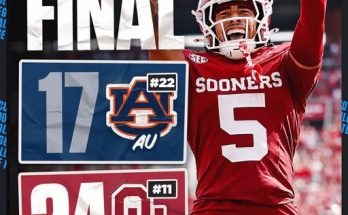The Golden State Warriors have been ranked ninth in the latest NBA power rankings, and the reactions across the basketball world are a chaotic blend of confusion, frustration, and resignation. It’s not that being placed in the top 10 is inherently disrespectful—it’s that the Warriors achieved that slot without making a single addition to their roster this offseason, and for many fans and analysts, that’s either a mark of blind faith in a fading dynasty or a subtle acknowledgment of the unique force that still lingers in San Francisco.
Let’s start with the most obvious question: how does a team that got bounced early in the playoffs, had internal chemistry issues, saw its aging stars grow older, and added no new significant talent in the offseason, end up ranked in the top ten? The answer lies in a combination of legacy, the Steph Curry factor, and the sheer unpredictability of this roster when it’s firing on all cylinders. While some teams made splashy acquisitions—trading for stars, signing promising youth, or making bold coaching decisions—the Warriors quietly stood still. And yet, they remain perched above teams that arguably had more upward momentum last season or more aggressive offseasons.
There’s something profoundly stubborn about the Warriors’ current philosophy. It’s as though the franchise, from the front office to the players themselves, refuses to accept that their window has closed. They’re not rebuilding. They’re not reloading. They’re simply reasserting. And that confidence, bordering on arrogance, is likely what fuels a top-10 ranking even in the absence of roster moves. While critics and doubters point to their lack of action as a warning sign, others argue that the Warriors already have what they need—it’s just a matter of getting the pieces to align.
That starts, of course, with Stephen Curry. At 37, Curry continues to defy the typical aging curve, playing at a level that still commands MVP conversations. He’s the heartbeat of this franchise, the reason opposing defenses still panic when he crosses half court, and the source of belief that this team can make one more deep postseason run. As long as he’s healthy, Golden State can never be fully counted out. His gravity, both on the court and within the organization, means that any team he leads is going to remain relevant in the championship conversation. The power rankings, in a sense, are as much a reflection of Curry’s individual brilliance as they are an assessment of the Warriors as a team.
But beyond Curry, the picture gets more complicated. Klay Thompson struggled with consistency last year and enters this season under increased scrutiny. The once-flawless shot now comes and goes, and his defensive impact has noticeably diminished since his injuries. While the team has publicly maintained confidence in Klay’s ability to bounce back, there’s an undeniable undercurrent of doubt regarding whether he can still be the elite two-way force he once was. Still, his presence brings spacing, championship experience, and the occasional scoring outburst that can change the course of a game or a series.
Draymond Green remains the emotional and defensive anchor, but he’s also at a point in his career where every technical foul, every suspension, and every minute of court time needs to be weighed against long-term value. His playmaking remains elite, and his IQ is off the charts, but even the most loyal fans have to admit that the volatility he brings to the locker room and the court can be exhausting. Yet, again, like Klay, his value isn’t just in the box score. It’s in the identity of the Warriors. Remove Draymond, and the soul of the defense—and perhaps the team—is compromised.
Then there’s the rest of the supporting cast. Andrew Wiggins, who was once an All-Star during the Warriors’ 2022 title run, had a wildly inconsistent season last year, both in terms of performance and availability. While he’s one of the better two-way wings when fully engaged, he seemed disengaged for large stretches last season, and whether he can return to form remains an open question. Kevon Looney is the definition of reliable, doing all the dirty work with minimal recognition, but he’s not the type of player who tilts the needle on a title-contending scale.
The younger players—Jonathan Kuminga, Moses Moody, Brandin Podziemski, and Trayce Jackson-Davis—each offer promise, but that’s all it is for now: promise. Kuminga, in particular, has been a polarizing figure within the franchise. His athleticism is off the charts, and when he’s locked in, he looks like a future star. But his minutes have fluctuated, his role has been inconsistent, and there’s still a lingering feeling that he may never get the full developmental runway he needs in Golden State’s win-now ecosystem. Moody, while steady and mature beyond his years, hasn’t yet carved out a guaranteed rotation role. Podziemski and Jackson-Davis impressed in Summer League and limited minutes, but projecting them as major contributors this early is optimistic at best.
So, with all that in mind—an aging core, no new additions, a murky future—why are they ninth?
The truth is that culture matters. Continuity matters. Championship DNA matters. And in a league where volatility is often mistaken for progress, the Warriors are a team that, for better or worse, believes in its blueprint. That belief is contagious. Analysts see a team that, despite its flaws, has a system that works when executed properly. They see an organization that has won four championships with largely the same core. They see a head coach in Steve Kerr who, while sometimes criticized for being too loyal to veterans, has a proven track record of adjusting when it matters most. In a sea of uncertainty, the Warriors represent a known quantity.
That known quantity, however, is increasingly walking a tightrope. If things start poorly this season—if Klay’s shot doesn’t return, if Draymond’s temper flares, if the young players don’t take a leap, if Curry’s magic finally fades—then ninth will feel laughably generous. There’s a real chance this team could be fighting just to make the play-in, let alone contending for a title. On the flip side, if they find cohesion, if the veterans have one more run in them, and if a player like Kuminga finally explodes into consistent stardom, the Warriors could absolutely overachieve and make the league regret ever doubting them.
There’s also an intangible factor that plays heavily into the perception of this team: fear. The league, and its fans, have been burned before by prematurely writing off the Warriors. They’ve seen this core respond to doubt with dominance. They’ve seen Curry silence critics with 40-foot daggers. They’ve seen the Warriors laugh in the face of adversity and go on title runs no one predicted. That memory lingers, and it shapes how the team is viewed, even when the facts suggest decline.
To be fair, it’s not like the Warriors had no options this offseason. There were trade rumors involving everyone from Pascal Siakam to Zach LaVine to OG Anunoby. There was talk of unloading Chris Paul’s contract before the guarantee deadline. There were discussions, some more serious than others, about moving Kuminga for more proven talent. But ultimately, the Warriors chose patience—or perhaps indecision. And in doing so, they’ve sent a message that they still trust in the players they have, that they still see themselves as contenders, and that they believe the best version of this team is already on the roster.
It’s a risky bet. The West has only gotten stronger. Teams like the Nuggets, Timberwolves, Thunder, and Mavericks are surging. The Lakers retooled. The Suns remain top-heavy but dangerous. Even the Clippers, if healthy, can’t be ignored. There’s little margin for error. If the Warriors start slowly or suffer key injuries, the gap between ninth and fifteenth could evaporate quickly. And at that point, the organization will have to confront uncomfortable questions about the future: Is it time to finally break up the core? Is it worth trading for a last-minute addition at the deadline? Is Curry’s prime being wasted by sentimental loyalty?
But for now, the Warriors sit at ninth. Not because of what they did this summer, but because of what they’ve done over the past decade. Not because they won the offseason, but because they’ve won in June—four times. That kind of history gives you leeway. It gives you the benefit of the doubt. And in a league that constantly moves on to the next big thing, maybe there’s still something admirable about a team that refuses to. Maybe the Warriors know something we don’t.
Or maybe, just maybe, they’re the last to realize that the dynasty’s clock has finally run out.



